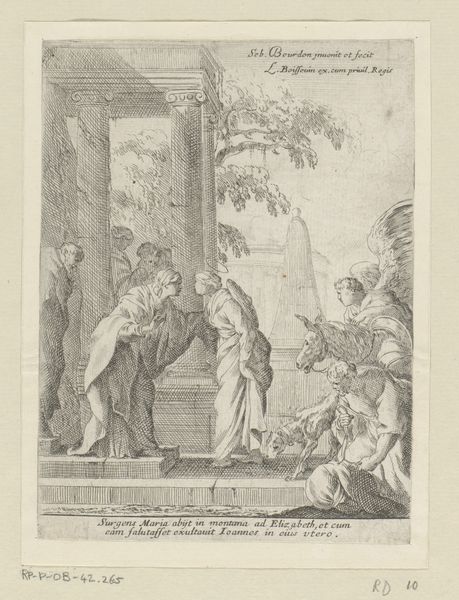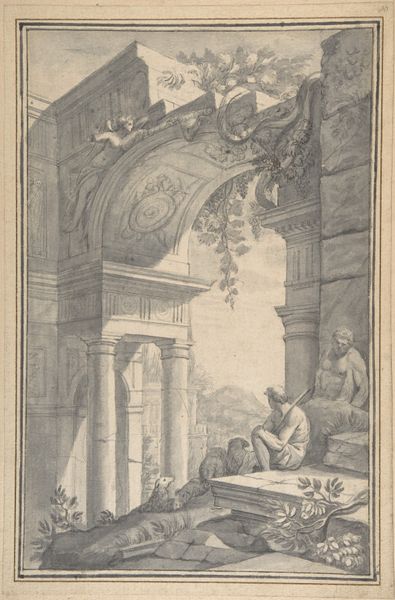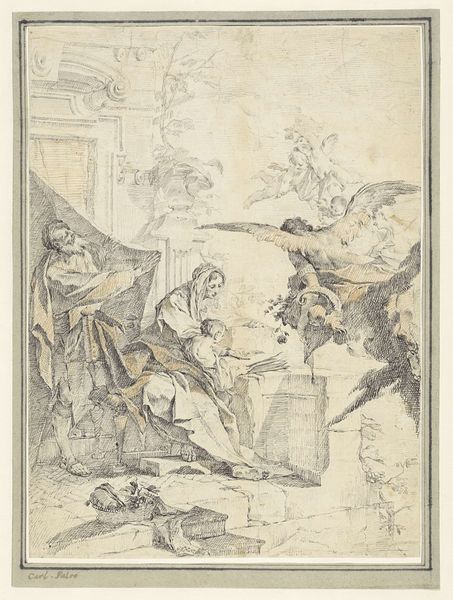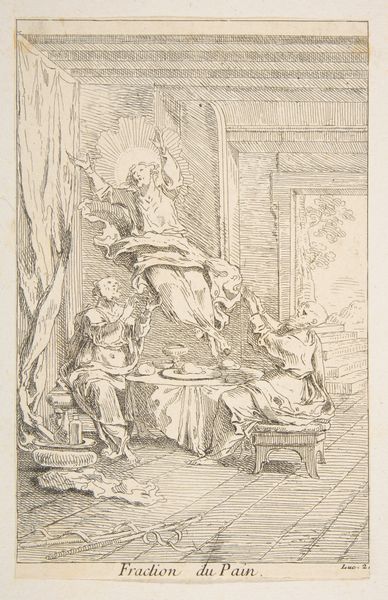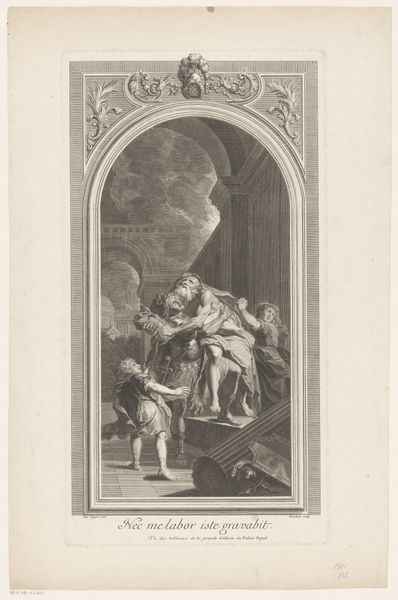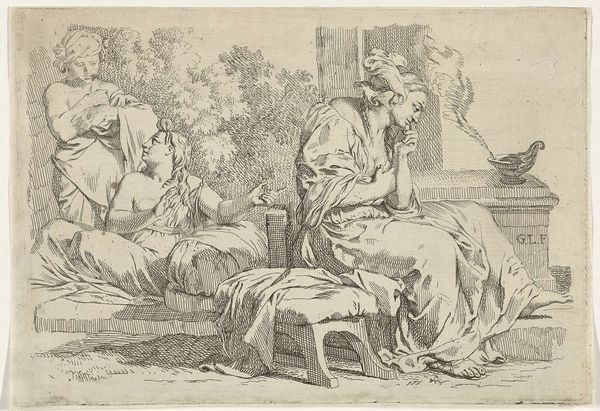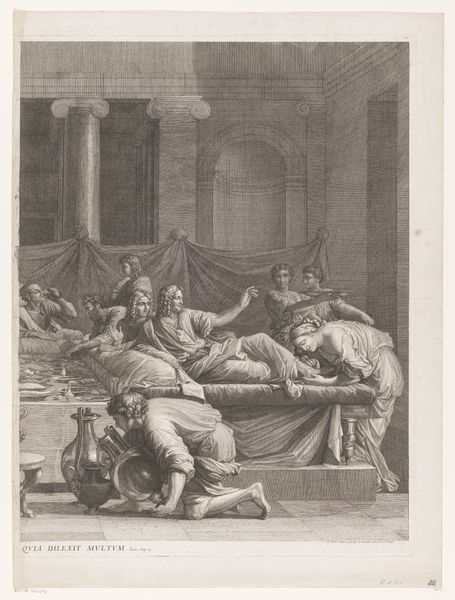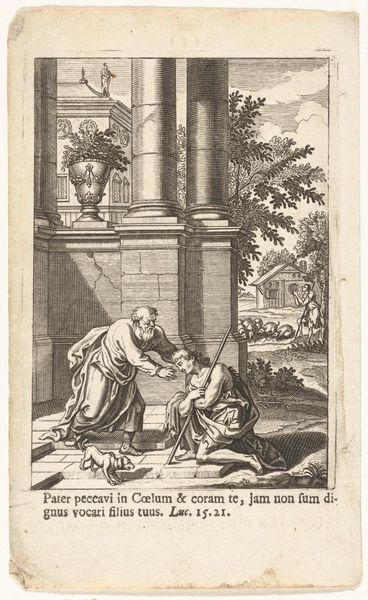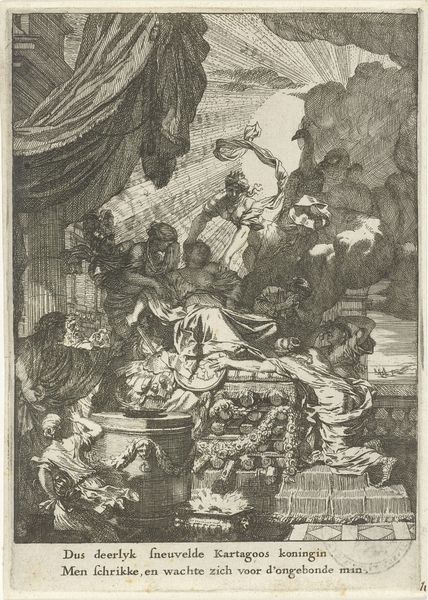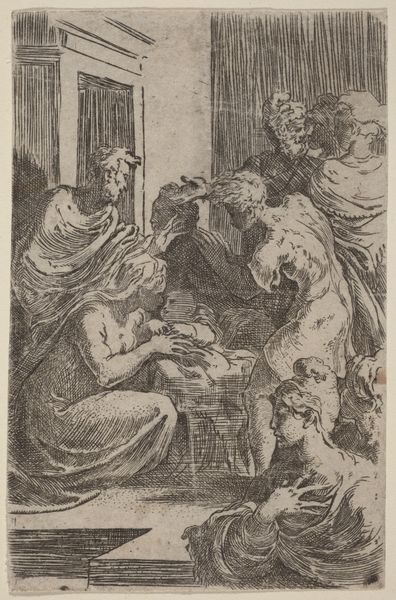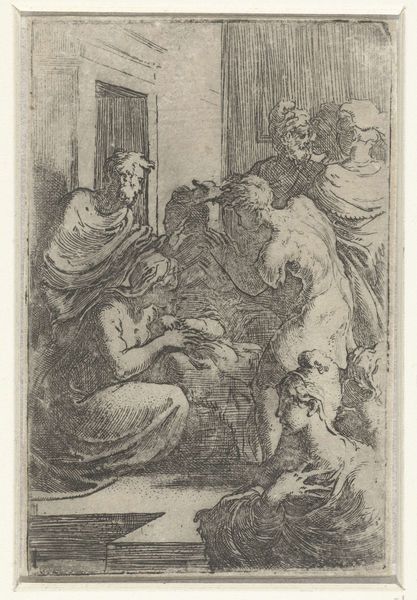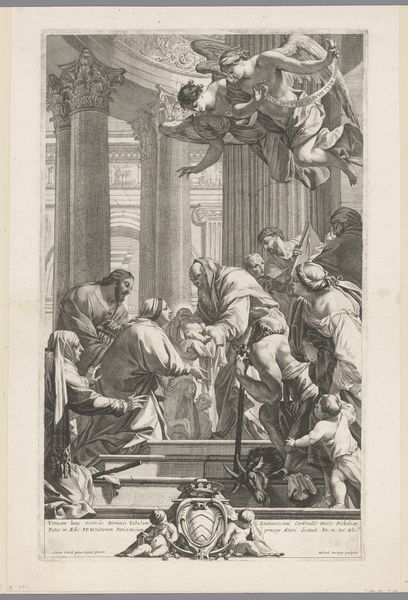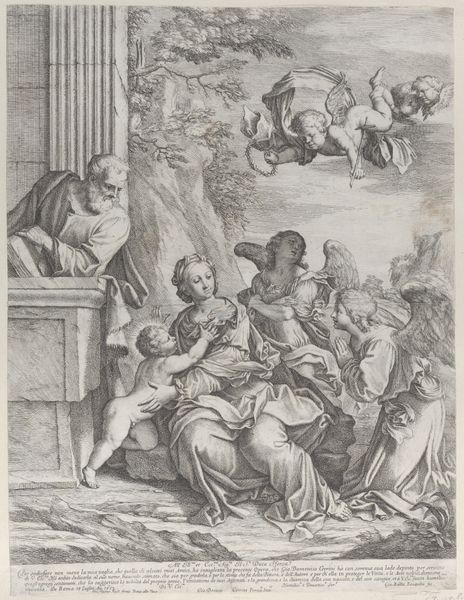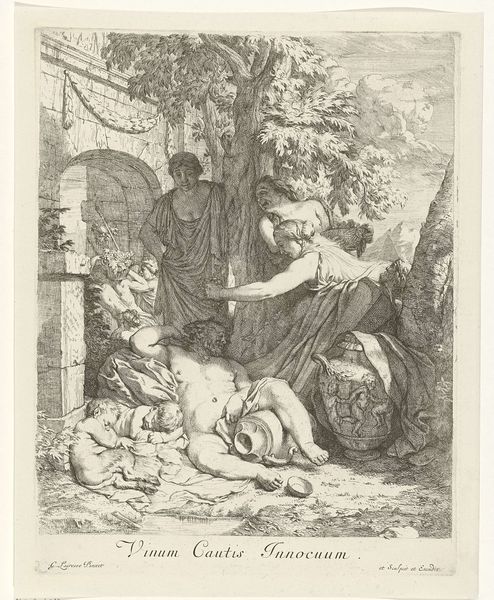
print, etching
#
baroque
# print
#
etching
#
landscape
#
figuration
#
history-painting
Dimensions: height 412 mm, width 310 mm
Copyright: Rijks Museum: Open Domain
Curator: This etching, titled "Treurende filosoof bij het graf van Alexander de Grote", roughly translated as "Mourning Philosopher at the Tomb of Alexander the Great", dates from around 1662 to 1736, and resides here at the Rijksmuseum. Editor: It's striking. The sheer density of objects scattered in the foreground creates such a strong sense of…vanity. All of Alexander's achievements, now just discarded things. Curator: Yes, but consider the material realities here. As a print, it was easily reproducible and circulated widely, potentially shaping perceptions of Alexander's legacy for a broader audience. It's not just about grand ideas of loss, it’s about the industrial processes used to convey those ideas. Editor: True, but those grand ideas are inescapable. Look at the philosopher himself, draped in sorrow. And notice the tomb inscription, it anchors Alexander's identity while contrasting the classical column ruins; together, they powerfully symbolizes time's erosion. What emotional weight it carries, this idea that all power is fleeting! Curator: Though the choice of etching as a medium also speaks to the democratization of art, by making art through easily-produced processes of etching and print. It reflects shifts in how information and artistry were disseminated at the time. Editor: See that pair of lovers languidly laid at the base? This image touches upon not only loss but the persistent life after a ruler has passed. That's why it’s so hauntingly complex, layering images of power, loss, legacy and new beginnings into the work. Curator: I agree that it is layered, and this landscape of crumbling columns and classical debris reflects a very physical disintegration – the materials decaying. The very foundations of power shown to be unsteady. Editor: Well, both in form and content it shows what can be communicated with art – it carries historical narrative, yet resonates psychologically, making grand figures into universally relatable moments. It’s a powerful intersection. Curator: Ultimately, looking at both its physical production and subject reminds us that even legacies, printed on paper, etched in history, are inevitably bound to material, and cultural context. Editor: Exactly. Its impact stems from that poignant pairing of enduring symbols of both the powerful Alexander and more grounded everyday life after his death. Together, both angles are integral to understanding the image.
Comments
No comments
Be the first to comment and join the conversation on the ultimate creative platform.
